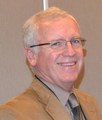RESTORATION OF WATERSHED FUNCTION: “Draw a distinction between maintenance and management. Understand that maintenance means preventing degradation, whereas management is about enhancement,” stated Tim Pringle, Chair, Ecological Accounting Process (EAP) Initiative (April 2018)

“Looking through the ‘worth lens’ has been transformational. We concluded that less emphasis should be placed on monetization of ecological services. It is more realistic to focus on investment of resources – that is, time and money – as well as aspirations of motivated stakeholders,” stated Tim Pringle. “For this reason, the Ecological Accounting Process (EAP) examines the investment of resources already made by stakeholders, as well as their aspirations concerning the maintenance and management of ecological services.”










